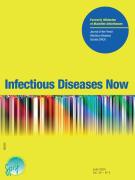Clinical manifestations, diagnosis, and treatment outcome of CNS aspergillosis: A systematic review of 235 cases - 02/11/21
 , Deepak Kumar a, ⁎
, Deepak Kumar a, ⁎  , Gopal Krishana Bohra a
, Gopal Krishana Bohra a  , Gaurav Kumar b
, Gaurav Kumar b| pages | 7 |
| Iconographies | 2 |
| Vidéos | 0 |
| Autres | 0 |
Highlights |
• | In this systematic review, we aim to analyze the changing epidemiology, risk factors, neuroimaging and other diagnostic markers and outcome in cases with proven neuroaspergillosis. |
• | While Aspergillus fumigatus was the most common aetiology, Aspergillus flavus CNS infections were more likely to lead to higher survival rates. |
• | Patients with disseminated disease, CSF hypoglycorrhachia and increased CSF galactomannan levels were associated with poor outcome. |
Abstract |
Aspergillus is a ubiquitous ascomycete that can cause a variety of clinical presentations depending on immune status. Central nervous system aspergillosis is a fatal disease with non-specific clinical features. The aim of this systematic review was to evaluate the epidemiology, clinical features, diagnosis and therapeutic interventions in CNS aspergillosis patients. We also aimed to examine the possible predictors of mortality in neuroaspergillosis. Literature search was performed in Medline, PubMed, and Google scholar and all patients≥18 years with proven CNS aspergillosis were included. A total of 175 articles (235 patients) were included in the final analysis. Their mean age was 51 years and the majority were male (57.4%). Overall case-fatality was 45.1%. Aspergillus fumigatus was the most common species (70.8%) followed by A. flavus (18.6%). Corticosteroids (22.6%), malignancy (19.1%) and diabetes mellitus (14%) were the most common risk factors. Neuroimaging findings included cerebral abscess (70.2%), meningitis (14%), infarction (13.2%) and mycotic aneurysm (8.9%). Disseminated disease (29.2% vs 17.8%, p 0.03), CSF hypoglycorrhachia (48.1% vs 22.2%, P: 0.001) and heightened CSF galactomannan (3.62 vs 2.0ng/ml, p 0.05), were the factors associated with poor outcome in neuroaspergillosis. Persons infected with Aspergillus flavus (13.1% vs 3.1%, P: 0.01), and having been treated with Voriconazole (51.9% vs 29.2%, P: 0.004) were more likely to survive. Our review will provide insight into the different spectrums of CNS aspergillosis. Notwithstanding the promising role of Voriconazole, future work is required to ascertain the role of combination antifungal therapy.
Le texte complet de cet article est disponible en PDF.Keywords : Invasive Aspergillosis, Immunosuppressed, CNS aspergillosis, Voriconazole, Cerebral abscess
Plan
Vol 51 - N° 8
P. 654-660 - novembre 2021 Retour au numéroBienvenue sur EM-consulte, la référence des professionnels de santé.
L’accès au texte intégral de cet article nécessite un abonnement.
Bienvenue sur EM-consulte, la référence des professionnels de santé.
L’achat d’article à l’unité est indisponible à l’heure actuelle.
Déjà abonné à cette revue ?

